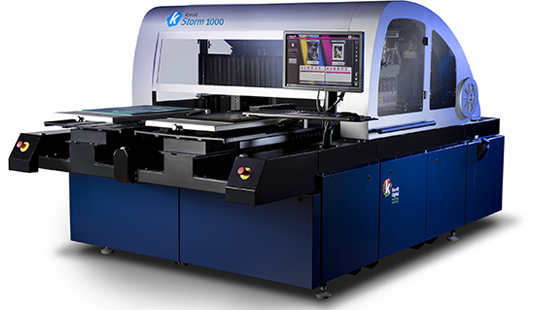Kornit Digital has launched two new industrial-grade direct-to-garment printing systems for medium-size producers of decorated garments or promotional T-shirts: the Kornit Storm Hexa and Kornit Storm 1000.
The Storm 1000 is the standard configuration of the new product family and features 12 printheads in a CMYK and White configuration. In high productivity mode, the Storm 1000 decorates up to 170 garments per hour including inline pretreatment. It covers a print area up to 50 x 70 cm / 20 x 28 in.

The Kornit Storm Hexa is for color conscious applications such as brand-related and promotional garments. This printer has 16 printheads and two additional colors for full CMYK, Red, Green and White support. It also can produce up to 170 garments per hour in high productivity mode.
Both printers feature recirculating ink systems to reduce ink consumption and optimize reliability. For increased productivity, both printers feature twice as many nozzles as previous Storm configurations.
Both systems are based on Kornit’s NeoPigment™ printing process and are equipped with a built-in pretreatment system, a quick-replace pallet mechanism, a 4-liter bulk ink system, an integrated humidity system, and a backup power system for a quick and easy system start.
All Kornit printing systems are compatible with a variety of fabrics (cotton, polyester, blends, denim, silk wool and more) and are geared towards industrial mass-customization.
“The Storm series of direct-to-garment systems have been Kornit’s signature product for more than a decade,” says Guy Zimmerman, Kornit’s Vice President of Marketing Business Development. “The Storm II is the best-selling industrial direct-to-garment printing system in the market. Launching a new and improved generation of Storm printers is an important milestone for us.”
Zimmerman calls the Storm 1000 and Storm Hexa “perfect production tools for a broad range of applications.” The new Storm configurations show drastically improved throughput, reductions in ink consumption, and excellent print quality.

